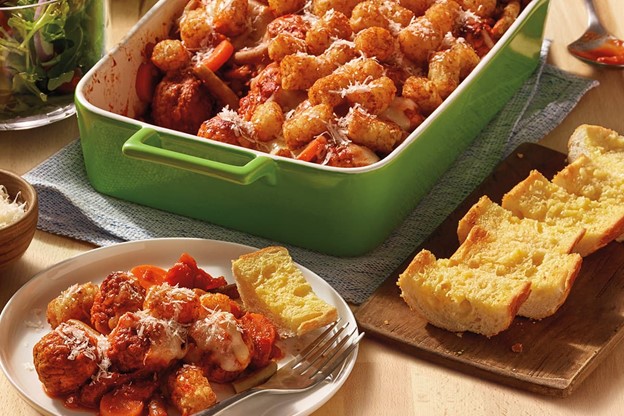
by Tomato Wellness | Mar 3, 2021 | Recipes
Looking for an affordable, no-fuss recipe that your whole family will love? Give this Meatball Parmesan Hot Dish a try. It requires only one dish and makes use of canned veggies and frozen meatballs for an inexpensive, pantry-friendly dinner. Jarred tomato sauce and diced tomatoes add a bright, tangy flavor, and pack in the nutrients. Lycopene, the plant compound that gives tomatoes their signature red color, is a powerful antioxidant shown to help prevent certain cancers, including prostate cancer. Get your daily dose of lycopene, along with vitamin C, potassium, iron, and fiber with this delicious Italian-inspired meal.
Frozen meatballs, jarred tomato sauced, canned carrots, green beans, and tomatoes combine with gooey mozzarella cheese and crispy tater tots to make this simple yet delicious recipe that is sure to become a favorite. It requires just 30 minutes in the oven, and virtually no prep time thanks to the use of frozen and canned foods. Did you know canned tomatoes actually have more lycopene than fresh? The cooking process enhances the compound and makes it more bioavailable, so you can feel good about using canned tomato products for your health. Your wallet and your body will thank you for making this affordable, nutritious meal, and your taste buds are sure to be excited by the classic Italian flavors. Weeknights can be busy, and it may feel impossible to get a healthy meal on the table, but this dish makes it easy. For the full recipe, visit our friends at Del Monte.
If you’re looking for other delicious recipes, check out some of our favorites:
Tomato Pesto Hummus
Swiss Chard Pecan Lasagna
Black Bean Corn Chili
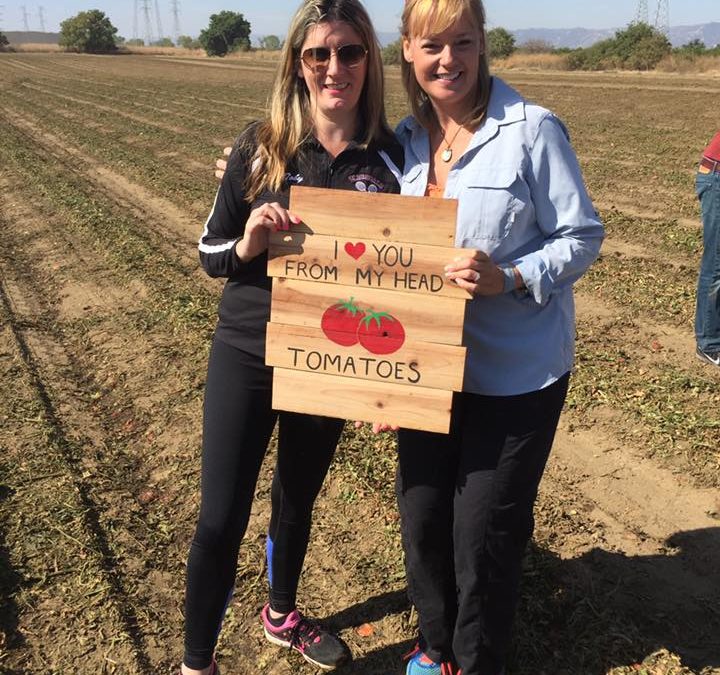
by Tomato Wellness | Feb 8, 2021 | Food and Nutrition, Tomato Products
 Meet Toby Amidor, who is the Tomato Wellness Registered Dietitian of the month for February 2021! You probably already know her as she’s EVERYWHERE! With over 20 years of experience in the food and nutrition industry, Toby Amidor, MS, RD, CDN, FAND is a Wall Street Journal best-selling cookbook author, spokesperson, speaker, leading dietitian, and recipe developer who believes that healthy and wholesome can also be appetizing and delicious. We have known and worked with her for many years, and she actually was on the very first RD Tomato Tour we helped to coordinate with our friends at Pacific Coast Producers. Having experienced the tomato harvest for herself, and being such a credible and widely respected expert on health, food safety and nutrition, we often turn to her to help explain the benefits of tomato products and to bust any negative myths about canned foods. Enjoy below some of her words on canned tomatoes, and a few of her delicious recipes featuring canned tomatoes!
Meet Toby Amidor, who is the Tomato Wellness Registered Dietitian of the month for February 2021! You probably already know her as she’s EVERYWHERE! With over 20 years of experience in the food and nutrition industry, Toby Amidor, MS, RD, CDN, FAND is a Wall Street Journal best-selling cookbook author, spokesperson, speaker, leading dietitian, and recipe developer who believes that healthy and wholesome can also be appetizing and delicious. We have known and worked with her for many years, and she actually was on the very first RD Tomato Tour we helped to coordinate with our friends at Pacific Coast Producers. Having experienced the tomato harvest for herself, and being such a credible and widely respected expert on health, food safety and nutrition, we often turn to her to help explain the benefits of tomato products and to bust any negative myths about canned foods. Enjoy below some of her words on canned tomatoes, and a few of her delicious recipes featuring canned tomatoes!

Toby Amidor – As a registered dietitian, part of my role is to debunk nutrition myths and provide a science-based reason why they are myths. As I am a huge fan of canned tomatoes, one of my biggest pet peeves is when folks and media outlets trash canned foods without really knowing all the facts. Please stop trashing canned foods, especially canned tomatoes, and understand the agricultural facts and science. Click here for four common myths about canned foods debunked, plus a ton of ways to use canned tomatoes in your dishes.
Many believe that the foods being canned are rejected foods but that couldn’t be further from the truth. Fruits and vegetables, including canned tomatoes, are specifically bred to be canned for their stronger flavor and for their firmness so they can hold up to being harvested by machines (this doesn’t mean GMOs are used). Over the last 40 to 50 years, scientists have gotten very good at breeding tomatoes to get the perfect blend of flavor and structure. The tomatoes used for canned tomato products are machine picked, not handpicked so they need to be sturdy. After the tomatoes are handpicked, they are cooked to preserve them. No additional additives or preservatives are needed. .
Of course, fresh is certainly a healthy option too. There is a time and place to use both fresh and canned in a healthy eating plan. If the fruit or vegetable is in season, enjoy it as a snack or in a sandwich. However, if you’re cooking or the fruit or vegetable isn’t in season, turn to canned (like canned tomatoes) for the best and most consistent flavor.
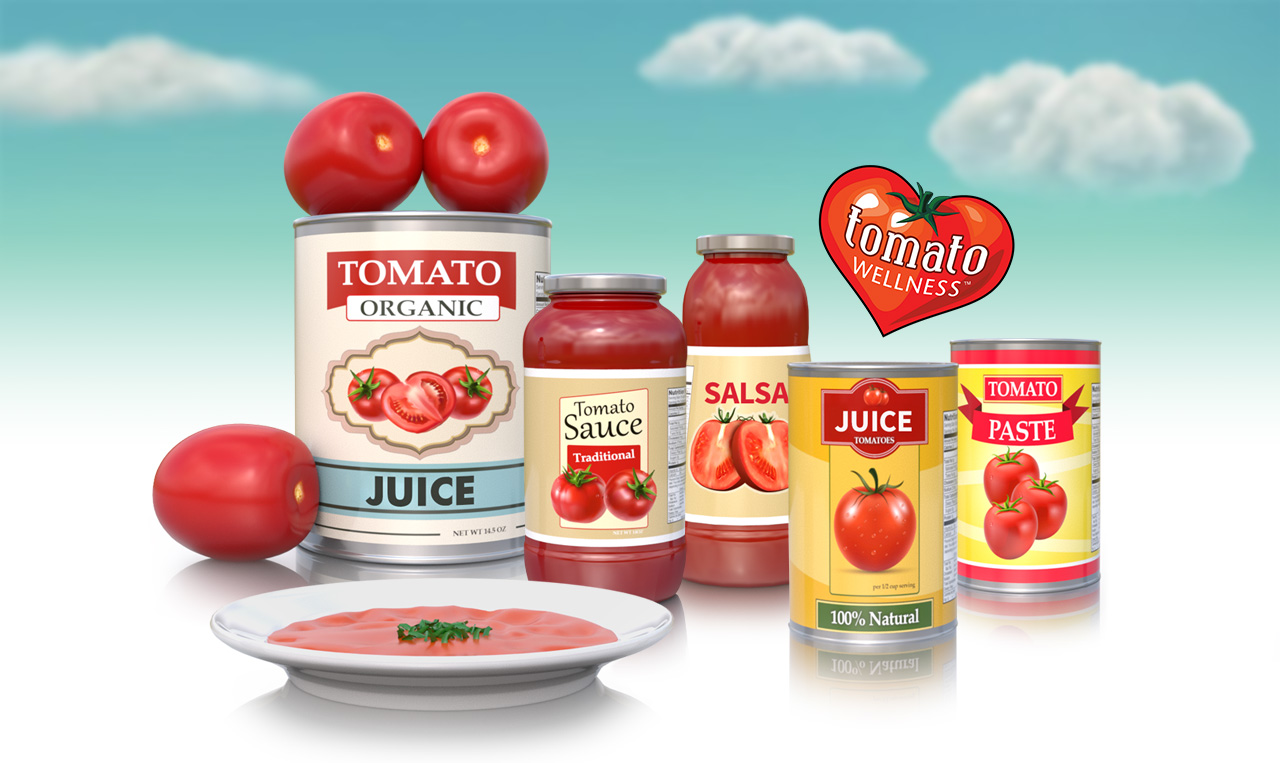
Health Benefits of Canned Tomatoes
Tomatoes and tomato products contain a wide variety of nutrients, including vitamin C, Vitamin E, potassium, and fiber. They’re also loaded with powerful antioxidants, such as beta-carotene and lycopene. Tomatoes are actually cooked during the canning process, and lycopene has actually been found to be more absorbable by the body in its cooked form. Therefore, canned tomatoes actually have more of the cancer-fighting lycopene than the raw variety.
In The Kitchen
Canned tomatoes are a permanent staple in my pantry. You can find them in many different forms, such as whole peeled, diced, stewed, crushed in puree, tomato paste and tomato puree. Here are some of my favorite ways to use canned tomatoes:
- Crushed tomatoes are a great base for a creamy tomato soup.
- Diced tomatoes are a nice addition to chili and curry.
- Whole crushed or stewed tomatoes can be used to make a homemade pasta sauce.
- Add tomato paste and/or diced tomatoes to homemade soups.
- Use fire-roasted crushed tomatoes to make a salsa for chicken and fish.
For more recipes featuring canned tomato products, check out some of Toby’s favorites:
Easy Eggplant Parmesan
Warming Tomato Soup with Peas and Carrots
Chicken Parm Casserole
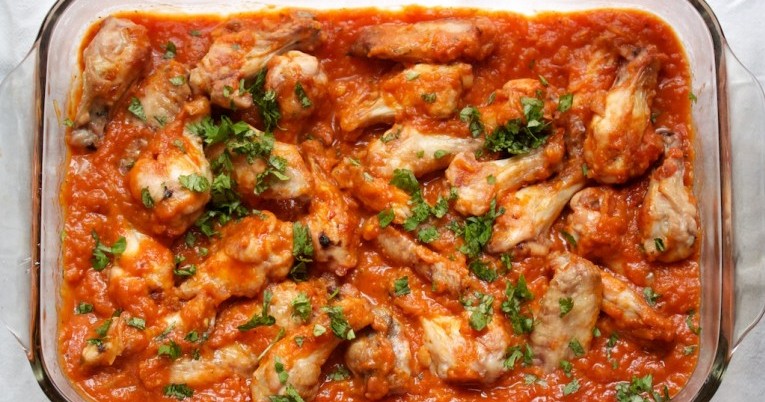
by Tomato Wellness | Jan 26, 2021 | Media Recipe, Recipes
Looking for an easy appetizer that’s bursting with flavor? Try these Baked Chicken Wings with Tomato, Ginger, and Sweet Onion Chutney for a unique take on the classic chicken wing. This recipe for baked chicken wings couldn’t be simpler and makes a perfect game day appetizer or party snack that’s sure to please everyone. Simple ingredients like garlic, sugar, vinegar, and tomatoes make it easy to prepare this Indian-inspired dish without breaking your budget or needing to buy any fancy products. Plus, this recipe makes some extra sauce that you can save for another meal. Try using it as a topping for grilled pork or baked fish for an easy protein-packed dinner.
The bright flavor of canned diced tomatoes forms the base for a tasty sweet and sour sauce, while providing plenty of nutrients. Canned tomatoes are especially high in lycopene, a compound that gives them their characteristic red color and has powerful antioxidant properties. Although further evidence-based studies need to be conducted to confirm the impact of lycopene and tomato intake, we know that tomato products can reduce the risk of certain diseases. Canned, cooked, and fresh tomatoes all contain lycopene, which has been shown to improve overall health. In addition to lycopene, tomatoes are rich in vitamin A, vitamin C, fiber, potassium, iron, and other antioxidants. These nutrients are critical for both short and long term health, so it’s important to incorporate tomato products into your meals.
For the full recipe, visit our friends at Pacific Coast Producers.
If you’re looking for other delicious recipes, check out some of our favorites:
Easy Chicken Curry
Swiss Chard Pecan Lasagna
Pizza Stuffed Chicken
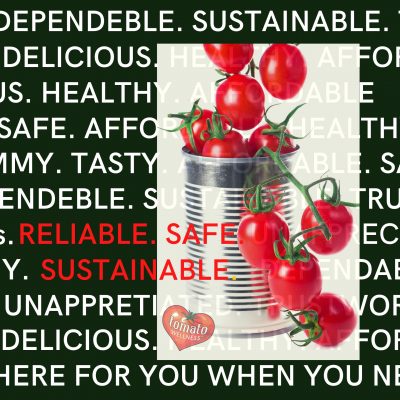
by Tomato Wellness | Aug 25, 2020 | Food and Nutrition
Canned tomato products have gained pandemic popularity for good reason. Give these tried and true pantry staples a fresh look.

In the early days of the pandemic, it threw a shock to the food supply system.
Canned tomato products are more popular than ever! All it took was a pandemic to clear every last can—diced tomatoes, tomato puree, sauce, salsa, marinara sauce—from supermarket shelves across the country. It’s no surprise really. Our reality has been shaken—especially the way we eat. Our new normal is cooking in and shopping less frequently, which means we rely on longer-lasting, shelf-stable foods—like canned tomato products—more than we ever have. So just like that, the wallflower of supermarket shelves is now the darling, helping us dish up delicious and nutritious meals that are not only convenient but economical. Of course, this has been true for generations of families who have relied on them, just like an old friend. Now is the perfect time to take a fresh look at what canned tomato products have to offer and enjoy what’s new again.
A Nod to History
Preserving tomatoes and other produce is a part of our history. For generations we’ve preserved tomatoes and other produce, capturing the season’s harvest to enjoy all year! It’s no surprise that the largest surges in U.S. canning history came in times of crisis—the two world wars. This history and tradition of canned tomatoes continues today as we rely upon and enjoy their long shelf life, convenience, and versatility.
Not only is it much easier to purchase canned tomatoes straight off supermarket shelves, it’s the best way—shy of picking them fresh from the summer garden—to enjoy them in terms of flavor and nutrition all year long. Farmers harvest them at peak ripeness in the field, then whisk them to a nearby processing plant where they are canned within four hours’ time, preserving and intensifying sun-ripened flavor and all those healthy nutrients.
Eat More Veggies!
We’re eating at home more, which means we have complete control when it comes to eating healthier. One of the places Americans fall short in terms of nutrition is the amount of fruits and vegetables we eat. A healthy eating pattern, according to the 2015 Dietary Guidelines for Americans, includes a variety of vegetables from all of the subgroups—dark green, red and orange, legumes, starchy, and other—and recommends tomato products as a source of intake for red and orange vegetables. Tomato products are the easy vegetable; it’s so easy to pack in a serving of veggies with tomato sauce, tomato paste, and canned tomatoes.
Tomato products play a key role in a Mediterranean-style diet—a way of eating that’s been linked with lower risk of heart disease, diabetes, Alzheimer’s disease, rheumatoid arthritis, certain types of cancer, obesity, and more. Med up your diet with tomato products—canned tomatoes, tomato paste, and tomato sauce are a part of so many Mediterranean dishes from pasta and pizza to ratatouille, beans, soup, and fish.
Get Back to Basics
A surplus of time has stirred a curiosity in the kitchen that’s taken many of us back to the basics. Cooking from scratch, like baking, churning butter, and making pasta, has not only rescued many of us from boredom, it’s taught us how simple and superior these foods can be. When it comes to canned tomatoes, they have saved many a meal during this pandemic. Canned tomato products open the door to homemade without the hassle. No fresh tomatoes? Open up a can of whole, diced, or crushed tomatoes to use instead. Many recipes are even better when made with canned tomatoes. No jarred salsa? No problem. Give Mango Salsa a try. Out of ketchup? A snap with canned tomato products, like this easy recipe for Spicy Sweet Tomato Jam. Make these homemade pantry regulars once and you may never go back to premade. Search for recipes at Tomato Wellness, line up your canned tomatoes, and be amazed. Quick, convenient, delicious, so much cheaper, plus the satisfaction of doing this yourself!
Tune into Comfort Foods
Turn down the news and turn to comfort foods. If there’s ever been a time to give ourselves a little extra love, it’s now. Canned tomatoes are comfort in a can. Their umami-rich flavor brings the soothing feel-good effect we all need. Velvety smooth tomato soup with a slice of warm, crusty bread, sloppy joes sandwiched in a soft bun, or a plate of vegetable lasagna—meals that warm heart and soul as they take us back to cherished memories and create new ones as well. Make a big batch—go ahead and double the recipes—and enjoy leftovers for more quick and easy meals during the week or freeze for later. Definitely consider using a slow-cooker or instant pot when you want a no-hassle meal—just add the ingredients to the pot and let it do all the work. Bonus: with canned tomatoes, there’s no washing, peeling, chopping, or fuss. Now that’s comfort—canned tomato style.
Cue into Cultural Cuisine
Travel plans are on hold for a while, but why not tap into those dream destinations with food? We can’t visit Paris right now, but you can bring it a little bit closer by whipping up a veggie quiche with tomatoes, mushrooms, and peppers. You’ll quickly discover the top tier role tomatoes play in traditional diets around the globe. They’ve been brightening our favorite meals with a splash of robust red and packing health promoting nutrients that help boost nutrition and reduce risk of chronic disease. From American Southwest to Latin America to Mediterranean, bring these international culinary gems into your kitchen. A few ways you can eat the globe and experience the world of food culture:
- Latin—Pico de Gallo—colorful blend of onion, peppers, and cilantro or
Tacos—Easy Tacos with Refried Beans and Corn Salsa
- Italian—Classic Tomato Sauce—served with pasta, on Arugula Salad Pizza, or over veggie patties, or
- Bruschetta—tomato on crunchy bread with garlic, olive oil, and fresh basil
- Mediterranean—Greek Salad—tomatoes, greens, Kalamata olives, and capers, or
- Tomato Hummus—tomatoes, chickpeas, tahini, extra virgin olive oil, pine nuts, and spices
It’s so nice to welcome canned tomato products back home—into our pantries and our home cooking. They are the silver (okay, metal!) tried and true lining in our current pandemic, helping us through our current challenge, but also reminding us of what truly matters.
Written by Sharon Palmer, MSFS, RDN, The Plant-Powered Dietitian, Photos by Sharon Palmer
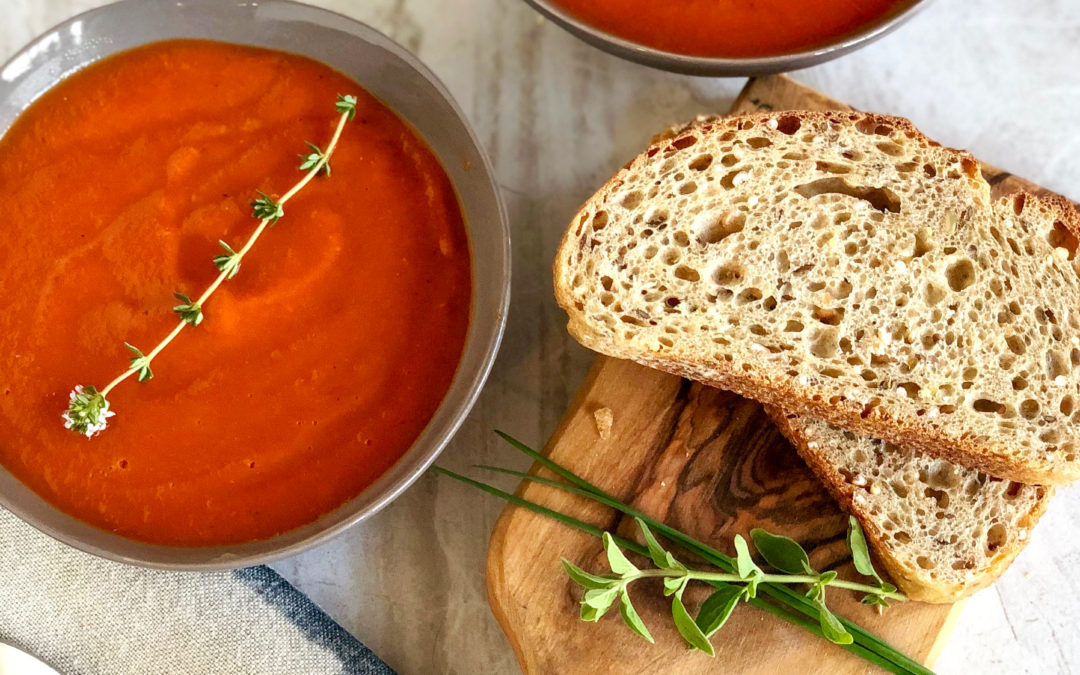
by Tomato Wellness | Jul 20, 2020 | Food and Nutrition
Canned tomato products have gained pandemic popularity for good reason. Give these tried and true pantry staples a fresh look.
Canned tomato products are more popular than ever! All it took was a pandemic to clear every last can—diced tomatoes, tomato puree, sauce, salsa, marinara sauce—from supermarket shelves across the country. It’s no surprise really. Our reality has been shaken—especially the way we eat. Our new normal is cooking in and shopping less frequently, which means we rely on longer-lasting, shelf-stable foods—like canned tomato products—more than we ever have. So just like that, the wallflower of supermarket shelves is now the darling, helping us dish up delicious and nutritious meals that are not only convenient but economical. Of course, this has been true for generations of families who have relied on them, just like an old friend. Now is the perfect time to take a fresh look at what canned tomato products have to offer and enjoy what’s new again.

In the early days of the pandemic, it threw a shock to the food supply system.
A Nod to History
Preserving tomatoes and other produce is a part of our history. For generations we’ve preserved tomatoes and other produce, capturing the season’s harvest to enjoy all year! It’s no surprise that the largest surges in U.S. canning history came in times of crisis—the two world wars. This history and tradition of canned tomatoes continues today as we rely upon and enjoy their long shelf life, convenience, and versatility.
Not only is it much easier to purchase canned tomatoes straight off supermarket shelves, it’s the best way—shy of picking them fresh from the summer garden—to enjoy them in terms of flavor and nutrition all year long. Farmers harvest them at peak ripeness in the field, then whisk them to a nearby processing plant where they are canned within four hours’ time, preserving and intensifying sun-ripened flavor and all those healthy nutrients.
Eat More Veggies!
We’re eating at home more, which means we have complete control when it comes to eating healthier. One of the places Americans fall short in terms of nutrition is the amount of fruits and vegetables we eat. A healthy eating pattern, according to the 2015 Dietary Guidelines for Americans, includes a variety of vegetables from all of the subgroups—dark green, red and orange, legumes, starchy, and other—and recommends tomato products as a source of intake for red and orange vegetables. Tomato products are the easy vegetable; it’s so easy to pack in a serving of veggies with tomato sauce, tomato paste, and canned tomatoes.
Tomato products play a key role in a Mediterranean-style diet—a way of eating that’s been linked with lower risk of heart disease, diabetes, Alzheimer’s disease, rheumatoid arthritis, certain types of cancer, obesity, and more. Med up your diet with tomato products—canned tomatoes, tomato paste, and tomato sauce are a part of so many Mediterranean dishes from pasta and pizza to ratatouille, beans, soup, and fish.
Get Back to Basics
A surplus of time has stirred a curiosity in the kitchen that’s taken many of us back to the basics. Cooking from scratch, like baking, churning butter, and making pasta, has not only rescued many of us from boredom, it’s taught us how simple and superior these foods can be. When it comes to canned tomatoes, they have saved many a meal during this pandemic. Canned tomato products open the door to homemade without the hassle. No fresh tomatoes? Open up a can of whole, diced, or crushed tomatoes to use instead. Many recipes are even better when made with canned tomatoes. No jarred salsa? No problem. Give Mango Salsa a try. Out of ketchup? A snap with canned tomato products, like this easy recipe for Spicy Sweet Tomato Jam. Make these homemade pantry regulars once and you may never go back to premade. Search for recipes at Tomato Wellness, line up your canned tomatoes, and be amazed. Quick, convenient, delicious, so much cheaper, plus the satisfaction of doing this yourself!
Tune into Comfort Foods
Turn down the news and turn to comfort foods. If there’s ever been a time to give ourselves a little extra love, it’s now. Canned tomatoes are comfort in a can. Their umami-rich flavor brings the soothing feel-good effect we all need. Velvety smooth tomato soup with a slice of warm, crusty bread, sloppy joes sandwiched in a soft bun, or a plate of vegetable lasagna—meals that warm heart and soul as they take us back to cherished memories and create new ones as well. Make a big batch—go ahead and double the recipes—and enjoy leftovers for more quick and easy meals during the week or freeze for later. Definitely consider using a slow-cooker or instant pot when you want a no-hassle meal—just add the ingredients to the pot and let it do all the work. Bonus: with canned tomatoes, there’s no washing, peeling, chopping, or fuss. Now that’s comfort—canned tomato style.
Cue into Cultural Cuisine
Travel plans are on hold for a while, but why not tap into those dream destinations with food? We can’t visit Paris right now, but you can bring it a little bit closer by whipping up a veggie quiche with tomatoes, mushrooms, and peppers. You’ll quickly discover the top tier role tomatoes play in traditional diets around the globe. They’ve been brightening our favorite meals with a splash of robust red and packing health promoting nutrients that help boost nutrition and reduce risk of chronic disease. From American Southwest to Latin America to Mediterranean, bring these international culinary gems into your kitchen. A few ways you can eat the globe and experience the world of food culture:
- Latin—Pico de Gallo—colorful blend of onion, peppers, and cilantro or Tacos—Easy Tacos with Refried Beans and Corn Salsa
- Italian—Classic Tomato Sauce—served with pasta, on Arugula Salad Pizza, or over veggie patties, or
- Bruschetta—tomato on crunchy bread with garlic, olive oil, and fresh basil
- Mediterranean—Greek Salad—tomatoes, greens, Kalamata olives, and capers, or Tomato Hummus—tomatoes, chickpeas, tahini, extra virgin olive oil, pine nuts, and spices
It’s so nice to welcome canned tomato products back home—into our pantries and our home cooking. They are the silver (okay, metal!) tried and true lining in our current pandemic, helping us through our current challenge, but also reminding us of what truly matters.
Photos by Sharon Palmer, MSFS, RDN, The Plant-Powered Dietitian





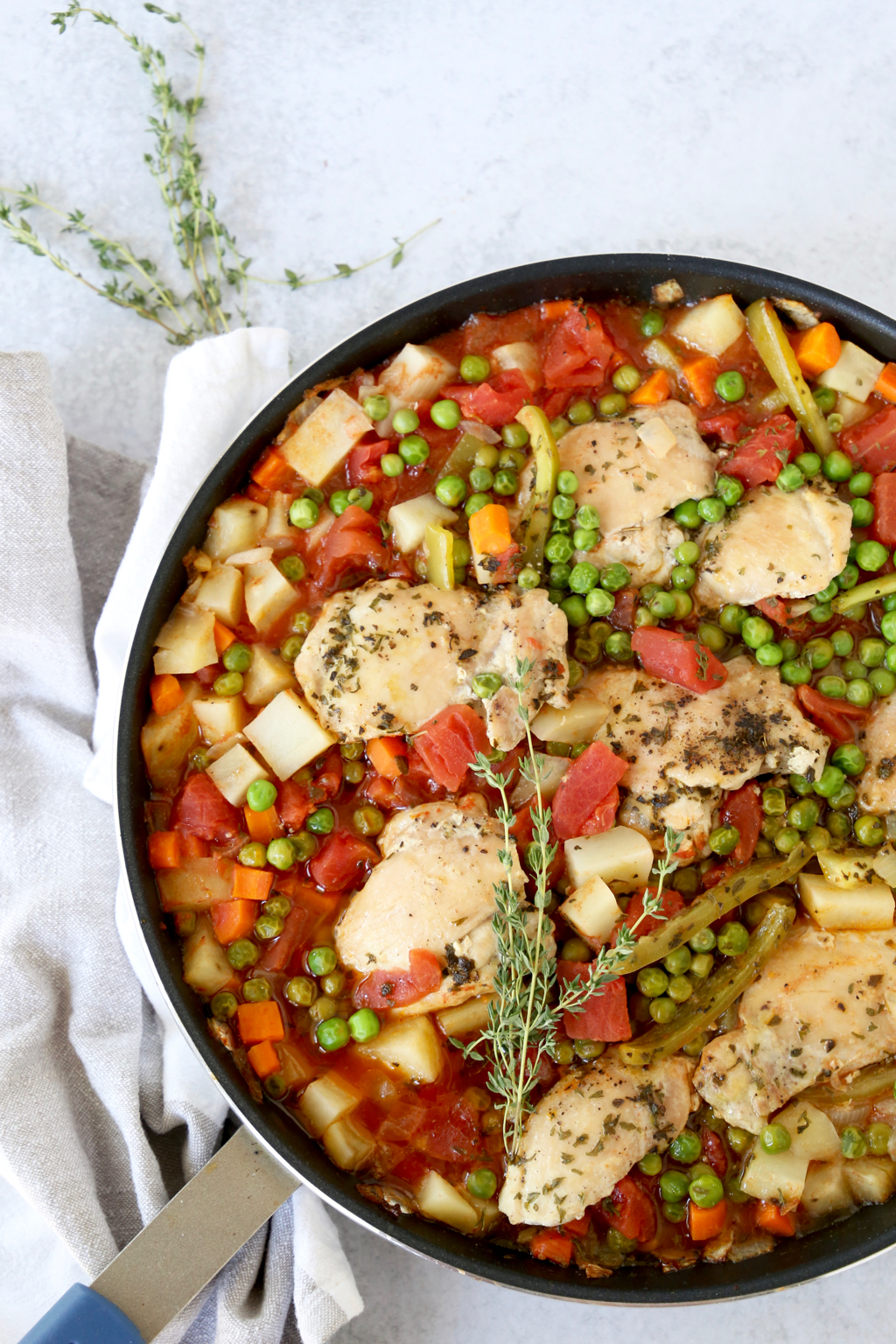



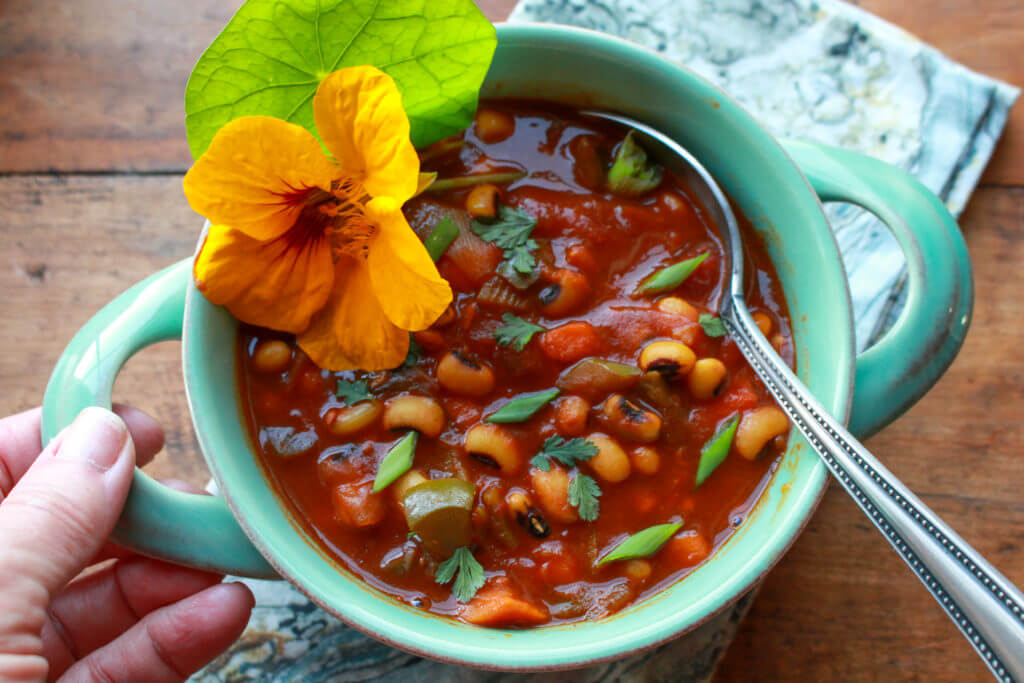
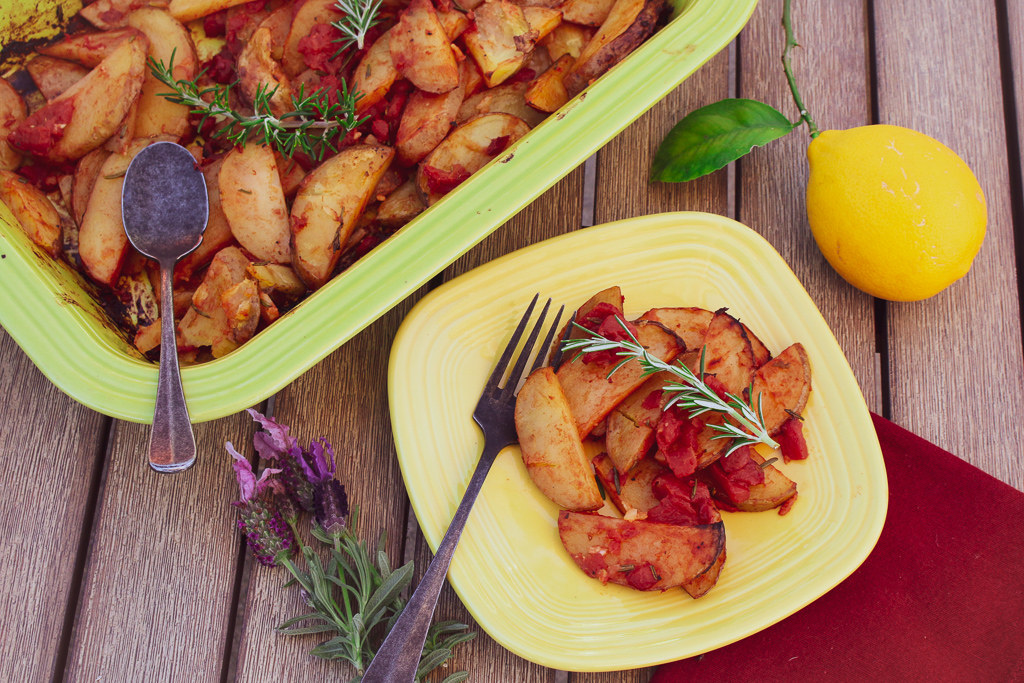
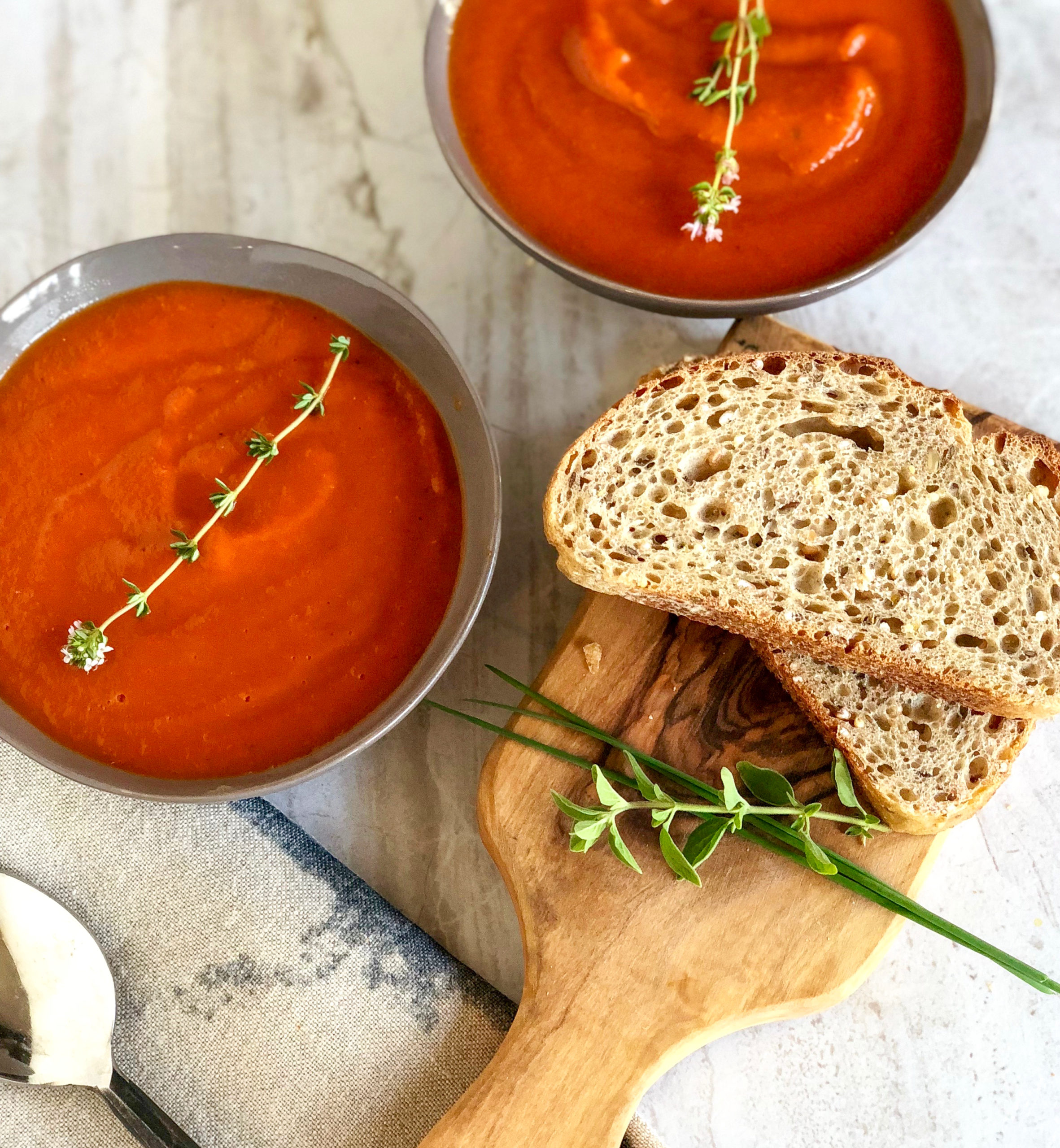
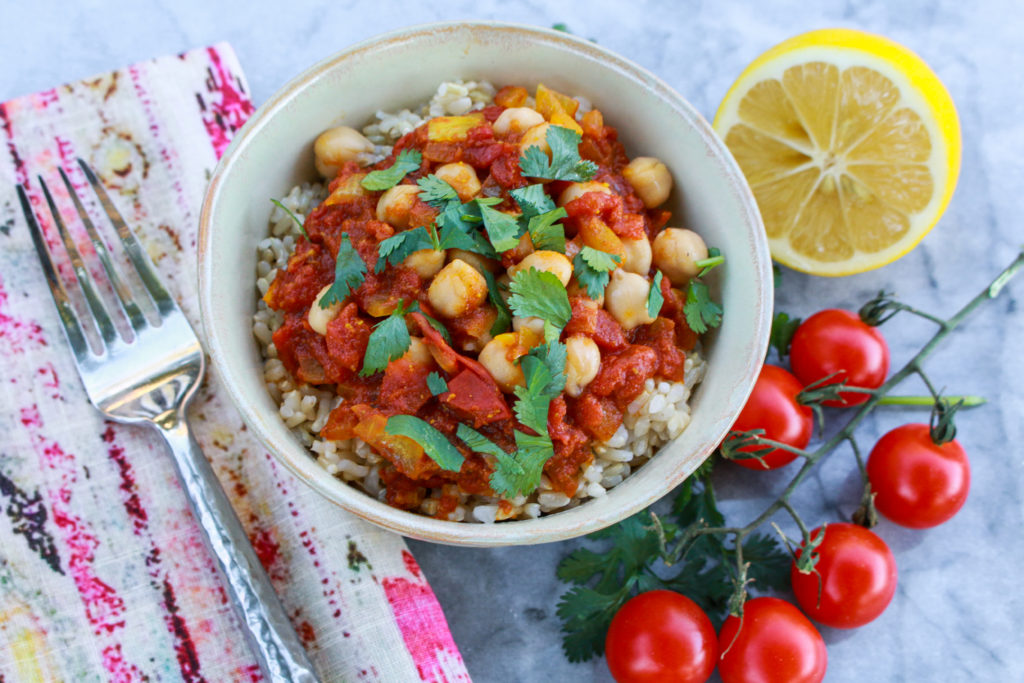
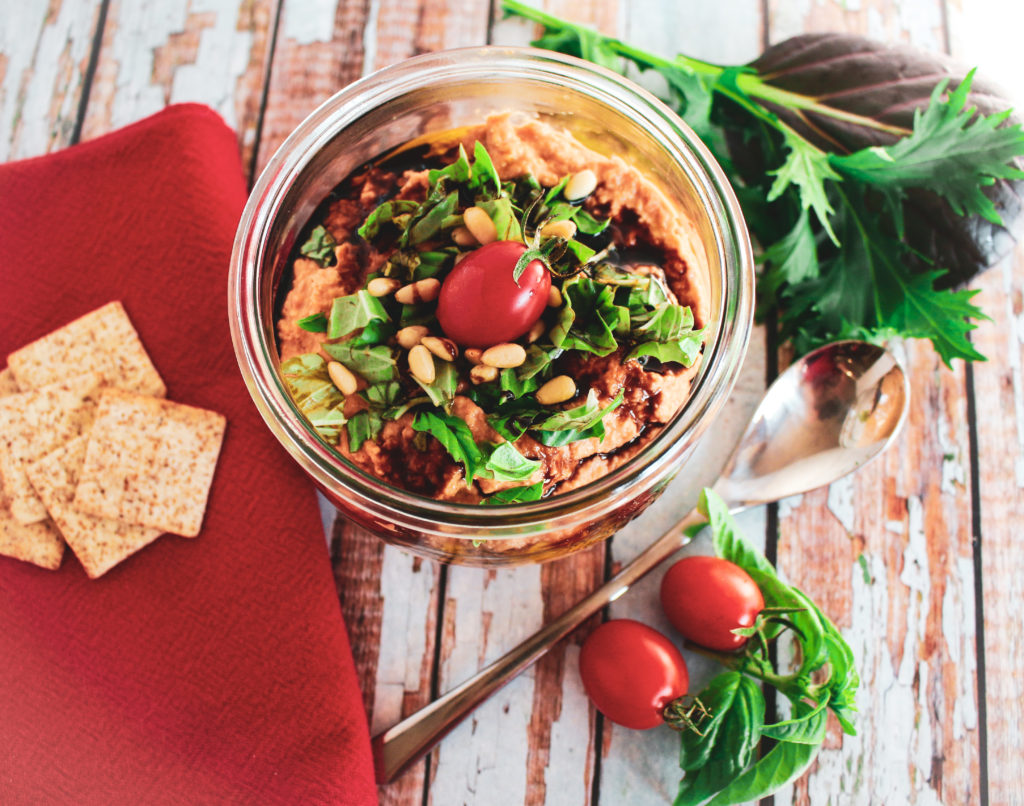


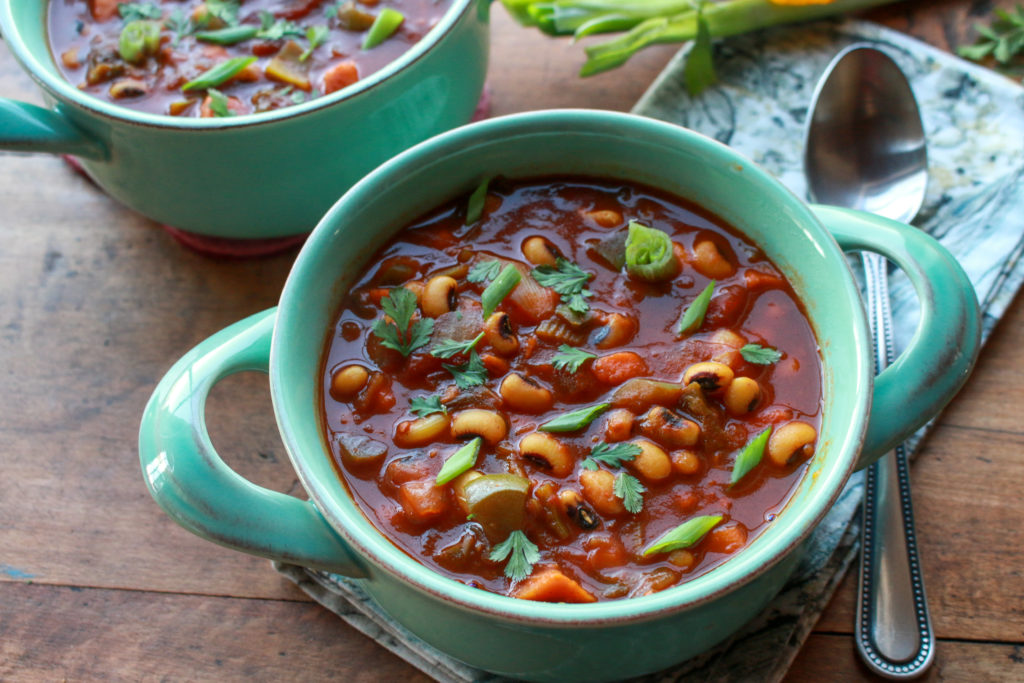

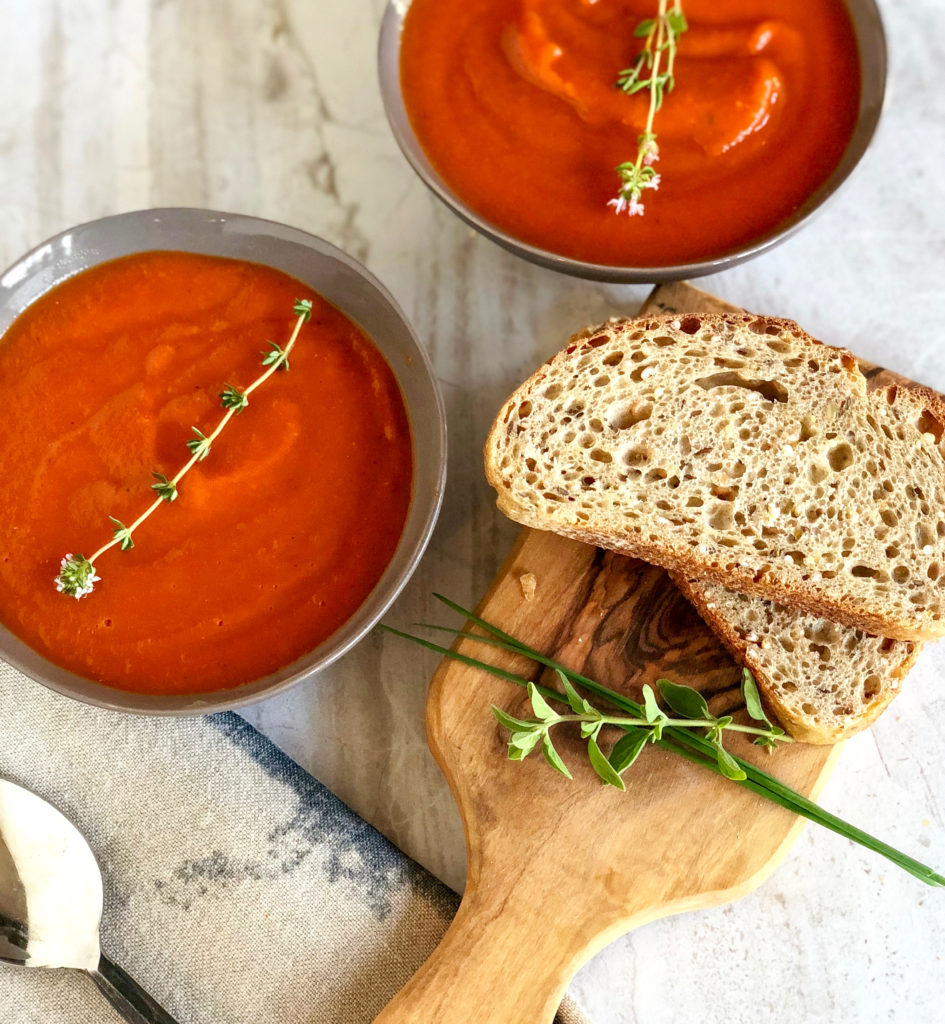
Recent Comments